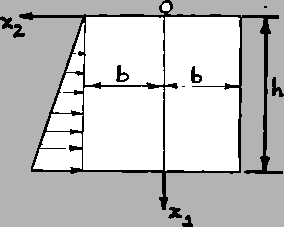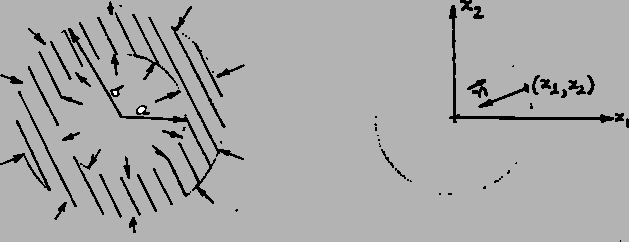Next: Nominal Stress Tensor Up: The Stress Tensor Previous: Kinetics of a Continuous
Applied distributed forces on the surface of a body are called surface tractions. We wish to find the relation between the surface tractions and the stress field defined within the body. This relation is eqn. (4.1.12) in which the left-hand side represents the surface tractions applied to the bounding surface of the body. The equation
Example: A long prismatic dam is subjected to water
pressure that increases linearly with the depth. The dam has thickness ![]() and height
and height ![]() . Write the traction boundary conditions for the traction-type
bounding surfaces of the dam.
. Write the traction boundary conditions for the traction-type
bounding surfaces of the dam.

Solution: At the top surface
![]() . Since
there is no applied force on this surface, therefore
. Since
there is no applied force on this surface, therefore
Example: Write the traction boundary conditions at the
inner and the outer surfaces of a cylindrical pressure vessel subjected to an
internal pressure ![]() and external pressure
and external pressure ![]() .
.

Solution: At a point on the inner surface
![]() . Therefore,
. Therefore,
Exercise: Given the following stress distribution
![$\displaystyle [\mathbf{T}] = \left[\begin{array}{ccc}x_1 + x_2 & T_{12}(x_1,x_2...
... T_{12}(x_1,x_2) & x_1 - 2x_2 & 0\\ 0 & 0 & x_2\end{array}\right]\times 10^3,$](img1246.gif) |
Exercise: Consider the following stress distribution for a certain circular cylindrical bar
![$\displaystyle [T] = \left[\begin{array}{ccc} 0 & -\alpha x_3 & \alpha x_2\\ -\alpha x_3 & 0 & 0\\ \alpha x_2 & 0 & 0\end{array}\right]\ ,$](img1250.gif) |